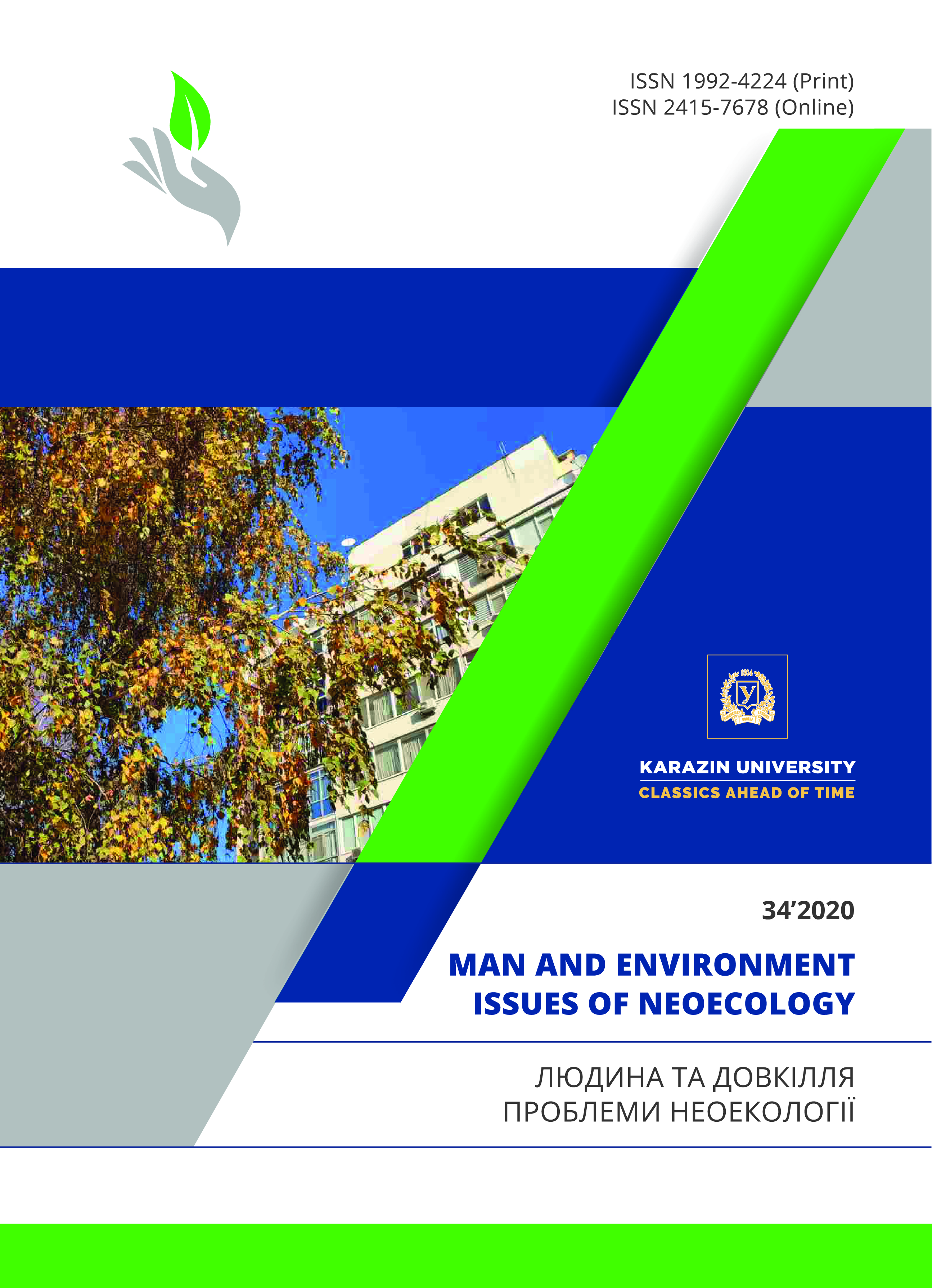Classification of Packaging Waste in the Municipal Solid Waste and Preconditions of its Effective Treatment in Regions Of Ukraine
Abstract
Purpose. Characteristics of the packaging waste group and development of such waste classification systems on various grounds, as well as the definition of areas for effective management and treatment.
Methods. System analysis, methods of analysis and synthesis, generalization and interpretation.
Results. Studies of the municipal solid waste composition in the cities of Ukraine do not allow to fully quantify the packaging waste, but the approximate content of such waste is 10-20%. Packaging waste can be classified by composition, place of generation and treatment options. The classification of packaging waste on the basis of the waste hierarchy is the basis for the developed priority number of directions of such waste management. It is indicated that packaging waste is the secondary material resources of the first stage with the available processing technologies. Increasing the extraction rate of packaging waste from the total municipal solid waste flow is a necessary condition for the efficient use of their resource potential and is possible only in case of waste flow differentiation at the beginning of its life cycle.
Conclusions. The packaging waste group in the municipal solid waste is characterized by a significant content and variety of composition, which can be classified on various grounds, such as composition, place of generation and approach to management and treatment. In accordance with the developed priority number of waste management directions, it is necessary to create less packaging, and the existing one is effectively recycled and produced from biodegradable materials. In modern conditions, packaging waste is the most common secondary raw material, but due to the extremely low level of separate collection implementation, such waste loses its resource value and pollutes the environment. Therefore, proper organization of separate collection is the key to effective utilization of packaging waste.
Downloads
References
Prykhodko, V.Ju. (2018). The analysis and prospects of municipal solid waste problem. Proceedings of the IV International scientific and practical conference: Transboundary Cooperation in the Field of Environmental Safety and Environmental Protection: Gomel, 2018, 129-133. (In Russian).
The national Strategy of waste management in Ukraine by 2030. (2017). Retrieved 2020, October 21 from https://zakon.rada.gov.ua/laws/show/820-2017-%D1%80 (In Ukrainian).
Prykhodko, V.Yu., Safranov, T.A. & Shanina, T.P. (2019). Current state of the municipal solid waste management and treatment area in Ukraine. Man and environment. Issues of neoecology, 32, 58-66. https://doi.org/10.26565/1992-4224-2019-32-05 (In Ukrainian).
The Draft Law of Ukraine on Packaging and Packaging Waste. (2020). Retrieved 2020, October 21 from https://www.minregion.gov.ua/base-law/grom-convers/elektronni-konsultatsiyi-z-gromadskistyu/proekt-zakonu-ukrayini-pro-upakovku-ta-vidhodi-upakovki/ (In Ukrainian).
The Draft Law of Ukraine on Waste management. (2019). Retrieved 2020, October 21 from http://w1.c1.rada.gov.ua/pls/zweb2/webproc4_1?pf3511=67094 (In Ukrainian).
Draft Law of Ukraine on Packaging and Packaging Waste. (2010). Retrieved 2020, October 21 from https://ips.ligazakon.net/document/JF5N700A (In Ukrainian).
Koptiukh, L.A. (2014). Packaging industry and environment]. Kyiv: Universitet “Ukraina”, 214. (In Ukrainian).
Turiab, L.V. & Kulik, L.Y. (2016). State and problem of packanging industry. Book Qualilogy, 2(30), 94-101. (In Ukrainian).
Semko, P.P. (2019). Current trends in the generation and treatment of secondary raw materials in Ukraine. Waste Management – 2019: presentation of reports. Retrievedv 2019, June 30 from https://drive.google.com/drive/folders/1EqbyNbtvacTRYRXTS6dE8D9rdF9EXbZb (In Ukrainian).
Lapteva, Yu. (2019). Secondary PE market in Ukraine. Waste Management – 2019: presentation of reports. Retrieved 2019, June 30 from https://drive.google.com/file/d/1zE7Y9FwTJHqnusr142cDWpco3-awMjab/view?usp=sharing (In Russian).
Skrypnyk, A.P. (2007). Municipal solid waste morphological composition analysis as the constituent of the approach to waste problem decision. Bulletin of OSENU, 4, 78-85. (In Russian).
Waste management and treatment. (2012). Odesa: TES, 272. (In Ukrainian).
Tochickaja I., Sysoev S. & Batova N. (2020). Circular economy monitoring: focus on packaging. Retrieved 2019, June 30 from http://www.beroc.by/upload/iblock/6c0/6c0659b9c3e5a1228f13d2d913883f57.pdf (In Russian).
Tarantseva, A. (2019). Extended producer responsibility is the basis of a circular economy. Presentation of course “MSW – do it now”. Retrieved 2019, June 30 from https://courses.prometheus.org.ua/courses/course-v1:IRF+WST101+2019_T2/about (In Ukrainian).
Babak, A.V. & Slabyi, V.H. (2016). Extended producer responsibility for packaging waste. Upakovka, 3(19), 47-49. Retrieved from http://nbuv.gov.ua/UJRN/Upakovka_2016_3_19 (In Ukrainian).
Veolia. Veolia. A modular approach to the formation of an individual waste management system. (2019). Waste Management – 2019: presentation of reports. Retrieved 2020, October 21 from https://drive.google.com/drive/folders/1kPsdz0M4ql_gkWZLKYPRVZ-q7MhtqLFz (In Ukrainian).
Authors reserve the right of attribution for the submitted manuscript, while transferring to the Journal the right to publish the article under the Creative Commons Attribution License 4.0 International (CC BY 4.0). This license allows free distribution of the published work under the condition of proper attribution of the original authors and the initial publication source (i.e. the Journal)
Authors have the right to enter into separate agreements for additional non-exclusive distribution of the work in the form it was published in the Journal (such as publishing the article on the institutional website or as a part of a monograph), provided the original publication in this Journal is properly referenced
The Journal allows and encourages online publication of the manuscripts (such as on personal web pages), even when such a manuscript is still under editorial consideration, since it allows for a productive scientific discussion and better citation dynamics (see The Effect of Open Access).





